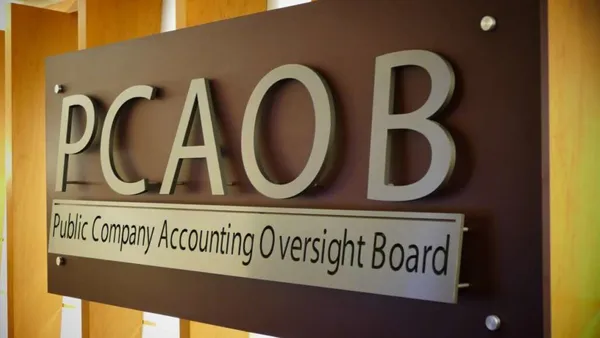Transforming a company’s tax function is a priority for most tax department leaders. However, a recent survey of senior tax and finance executives in Europe revealed numerous barriers stand in the way. The top barrier cited by tax executives was that the tax function isn’t viewed as a source of strategic value, according to the poll conducted by Industry Dive, a top business journalism company, in conjunction with Ryan, a leading global tax services and software provider. Conquering this bias must be the first key step in a true strategic tax evolution within today’s organizations.
Tax executives can prove the strategic value of their tax function by overcoming the barriers to transformation. Therefore, achieving this tax transformation sets up a self-fulfilling prophecy: The transformed tax department is viewed as and becomes a source of strategic value for the company and in itself becomes more efficient and effective in its day-to-day operations. “Tax executives have two choices: persist in the status quo or build a compelling business case for change,” says Andrew Burman, Principal, Tax Transformation, Ryan.
Barriers to tax transformation and how those barriers can be overcome
Perspective bias aside, let’s review the other most common barriers cited in the survey and the potential solutions to overcome them.
Compliance consumes bandwidth
- Barrier
Too often, tax professionals can become stuck in a low-level, repetitive compliance loop, devoting so much time to compliance and auditing tasks that they don’t have room to work on strategic goals or pathways to improve efficiencies and thus company profits.
- Solution
While compliance is integral, tax teams can make the compliance process more efficient with the help of more resources, such as implementing tools and technologies and in some cases, outsourcing. Efficiency can also come from improved data, processes and digital systems.
Lack of time to develop knowledge of best practices
- Barrier
This is related to the compliance loop barrier. Tax teams often lack the time to strategize, plan for and carry out tax department transformation and integrate best practices because day-to-day tasks get in the way. In the survey, 36% of the tax executives and 27% of the finance executives cited “no time to develop and implement strategy” as a barrier to tax transformation.
- Solution
The challenge presented by lack of time can be the opportunity to undertake purposeful automation of manual, repetitive and time-consuming tasks to present a solution to the status quo, while also improving efficiencies. Taking account of simple tasks that could be automated can save valuable time, as opposed to opting only for large-scale, complex automation projects that may take more time and resources to implement. Outsourcing can also be a solution for areas of the tax functions that are not core competencies of the internal team, such as VAT compliance. This helps to remove the time and resource burden because of the nature and complexity of extracting and providing data on a regular basis, potentially to multiple tax authorities, ultimately freeing up the tax team to work on more strategic, higher priority, value-add projects.
Increasingly complex regulation
- Barrier
In Europe, increasingly complex VAT regulation is forcing tax departments to invest significant resources in understanding, planning for and complying with new rules.
- Solution
Regulations that are perceived as a burden can actually become an opportunity. Capitalizing on the detailed data collection required by tax authorities, tax heads can advocate with IT and CFOs for upgrading technology to collect real-time transactional data and improve data transparency and use across the entire organization.
Insufficient technology
- Barrier
In the survey, 52% of the tax executives and 42% of the finance executives said “dated technology that needs to be upgraded first” was a barrier to tax transformation. The most cited barrier to transformation in the survey by finance executives and the second-most cited barrier for tax executives, was “competing technology objectives and cost,” which indicates the importance of tax heads to stand apart with a compelling narrative.
- Solution
Tax heads need to argue the benefits for tax tech investment: reduced audit risk, increased tax employee efficiency, improved tax talent recruiting and retention and sustained return on investment as the tax department uncovers profit opportunities. It is also beneficial to understand what technology is already available within the organization and how it could potentially be utilized more effectively or by other departments such as tax.
Ineffective communication and internal advocacy
- Barrier
Nearly half of the tax executives in the survey cited three separate but related issues as barriers to transformation: “don’t know where to start,” “unclear transformation vision and agenda,” and “no leadership pushing transformation.”
- Solution
The tax department head needs to have a clear vision, build a roadmap for transformation and a business case for change. They need to communicate their vision and advocate for it within the C-suite. As an industry, tax professionals benefit from collaboration through association memberships and networks to brainstorm best practices, hear about real-life case studies and discuss what has worked in various circumstances for other organizations. An outsourced tax transformation partner can also assist in bringing your vision to life, step by step.
Every tax function needs a bespoke solution
“When it comes to building a technology transformation roadmap, it’s not a one-size-fits-all process,” said Jun Miyake, Tax Technology Principal at Ryan. “What we typically do when building a roadmap for a client is to first determine what technology they have. Then we build a process of change for the short, medium and long terms. We don’t align ourselves to one particular product as such but try to make the most of what they already have. If they don’t have the right products, then we recommend what’s most appropriate for their circumstances and that can be delivered quickly.”
To accomplish tax transformation, tax heads must overcome multiple hurdles, starting with the perception that the tax function isn’t a source of strategic value. Tax executives can change that perception and achieve their transformation goals by improving compliance efficiency. They can also better utilize existing organization tools, advocating for technology upgrades to improve data collection and management while building a roadmap for tax transformation. To review the extensive insights of the recent survey of tax and finance executives across Europe, download our new white paper “Building a Case for Change – How to Amplify the Strategic Value of Your Tax Function” now.










